Where is the Euro Headed?
Currencies / Euro Mar 07, 2012 - 10:16 AM GMTBy: Submissions
 Marc Horn writes: The Euro composite started as a basket index and then became the Euro Index and is pretty much as close to textbook of Andrews pitchforks. When combined with MAP waves, an alternative wave counting method base on many principles of Elliot waves, it gives good results as to approximately where the market will move.
Marc Horn writes: The Euro composite started as a basket index and then became the Euro Index and is pretty much as close to textbook of Andrews pitchforks. When combined with MAP waves, an alternative wave counting method base on many principles of Elliot waves, it gives good results as to approximately where the market will move.
Primary pivots can be seen clearly below using a long simple moving. It is obvious that even though there has been a change in trend that occurred in 08 this trend is not yet clear some 3 years later other than it looks like it might be rolling over.
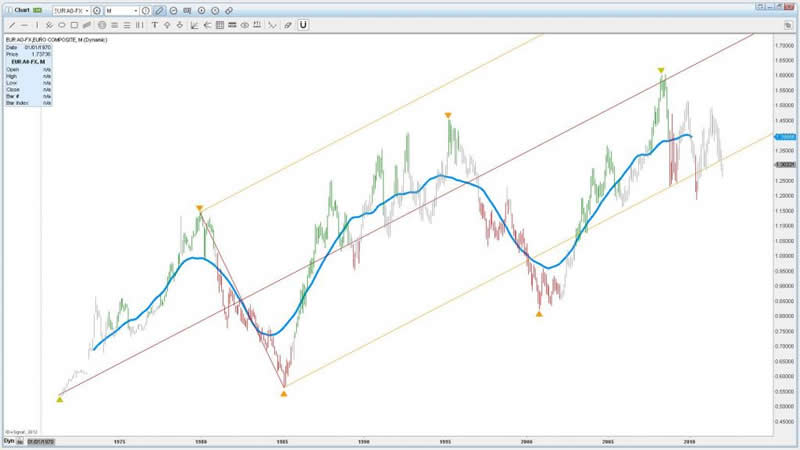
So from an investment view we have missed the big boat, or at least a large part of it but there are many more smaller boats we can ride.
MAP Waves are based on the following rules:
1 >= 0 / 2 >= 0 / 3 >= 1 / 4 >= 2 / 5 >= 3.
0 is the starting pivot on each time scale, and is a pivot from the next larger scale, and pivot 5 is a pivot of the next larger scale, which follows the same rules. The same rules apply for down waves in reverse, with the exception of occasional 3 wave corrections. This is where MAP waves differ substantially from Elliot Waves (EW), which use a process of endless corrections with numerous changes depending on how the correction develops, so can go on for years! Some EW specialists have corrections going back to 2000 if they choose that as the top and some even have corrections with higher tops! On its own EW is a good retrospective tool for confirmation, but not very predictive!
MAP waves overcome this, and, when combined with Andrews pitchforks give predictable results.
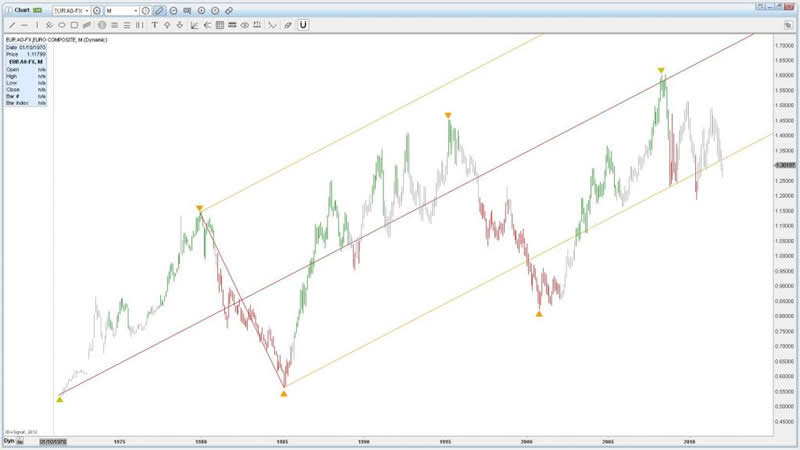
A simple example of combining Andrew’s pitchforks with MAP Waves is given using the EURO.
Basics:
ML - Median line / MLU - Median line parallel upper / MLL - Median line parallel lower / SP - Sliding parallel / Fork with pivot number.
Fork 012 - gives you the trend on that scale as can be seen above. Also this gives an approximate limit of the extremes, and changes in trend of different timescales.
Pivot 3 has not made the MLU so the trend is decreasing, so expect pivot 5 closer to ML then pivot 3
Once pivot 3 is made make a sliding parallel - dashed line of same colour scale and slide it to pivot 3. This gives you an approximate target line for pivot 4 - the MLL.
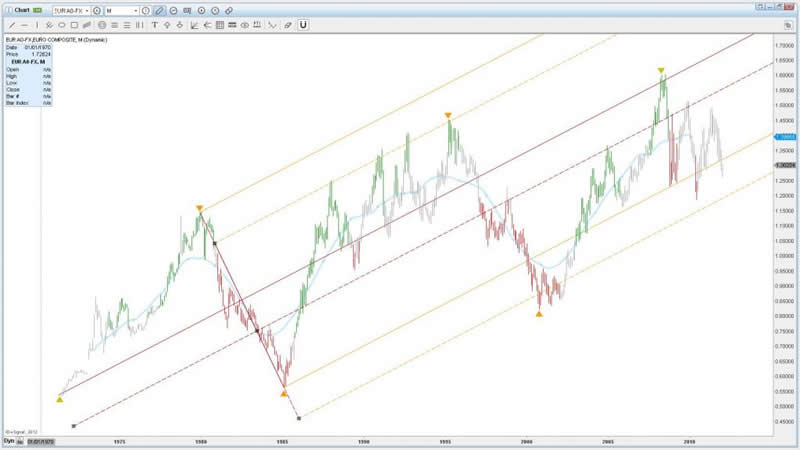
Now draw your next fork 123 and where the SP012MLL and123ML cross is your target area for pivot 4.
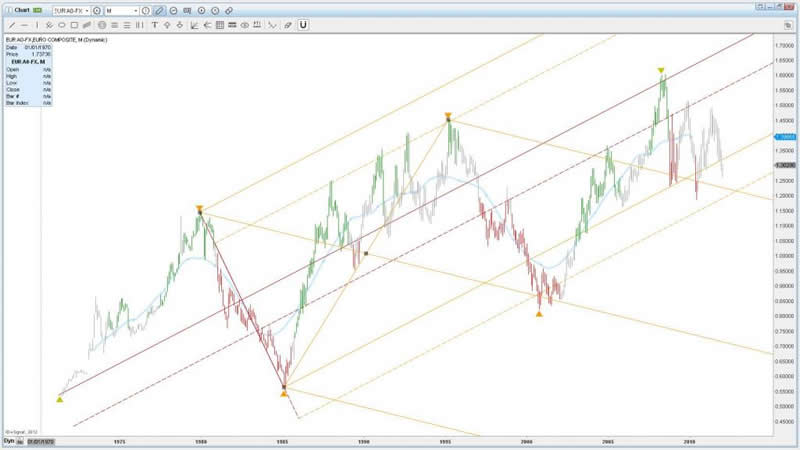
Once pivot 4 is made, draw in a sliding parallel of fork 123 and slide the MLL to pivot 4, and draw in fork 234.
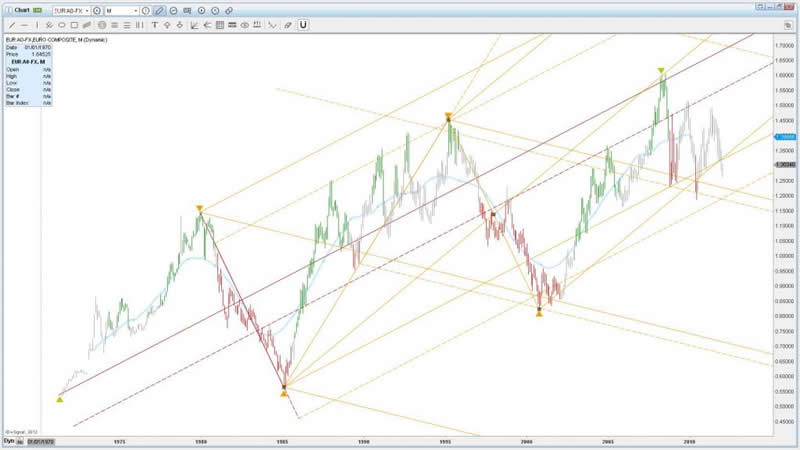
SP 123 gives the expected extreme of pivot 5.
012 ML and 234ML is the target area for pivot 5.
The distance from 012MLU to pivot 5 is expected to be greater than pivot 3.
Using MAP wave rules, pivot 5 is not only a monthly pivot, but also a quarterly pivot so the new trend is shown in gold, then the new trend is assumed to be pivot 345.

It is not surprising that the pivots after the 2008 high are in the approximate limits of the old trend lines.
So where do I expect it to go to? Pivot 1 rarely makes the 345ML, and often turns at the 125ML.
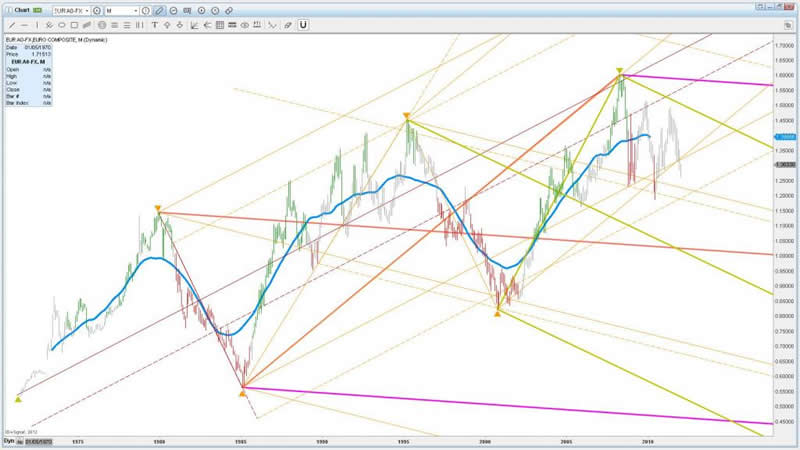
But that is a long line!
So going down 1 pivot scale to the weekly pivots we can narrow it down.
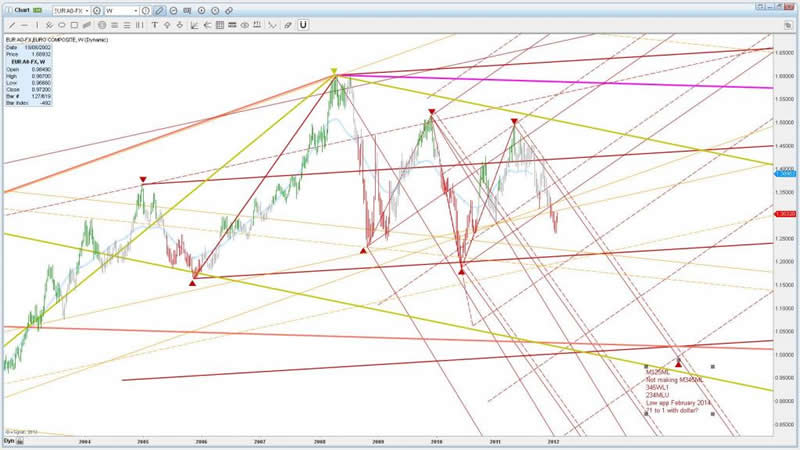
It would appear that the euro is trending to be par with the US$ in early 2014!
Using this same analysis technique on the S&P, we have put in daily pivot 3, of weekly wave 5, of monthly wave -2 if the October 2007 high is a quarterly pivot. So once this correction is over my analysis says we will have one new high, which will not be seen again for many years! Then wave 3 down will start.
© 2012 Copyright Marc Horn - All Rights Reserved Disclaimer: The above is a matter of opinion provided for general information purposes only and is not intended as investment advice. Information and analysis above are derived from sources and utilising methods believed to be reliable, but we cannot accept responsibility for any losses you may incur as a result of this analysis. Individuals should consult with their personal financial advisors.
© 2005-2022 http://www.MarketOracle.co.uk - The Market Oracle is a FREE Daily Financial Markets Analysis & Forecasting online publication.



